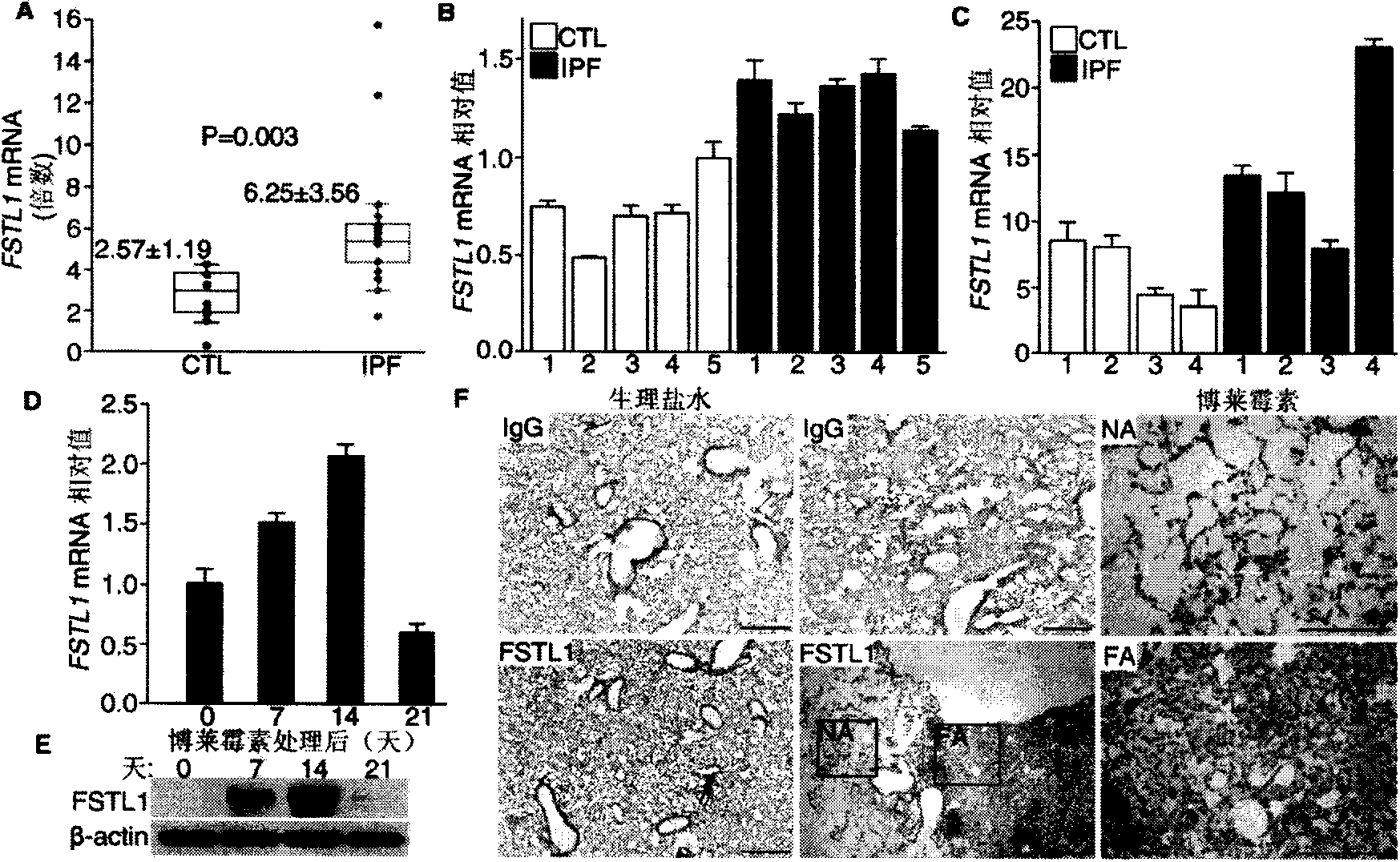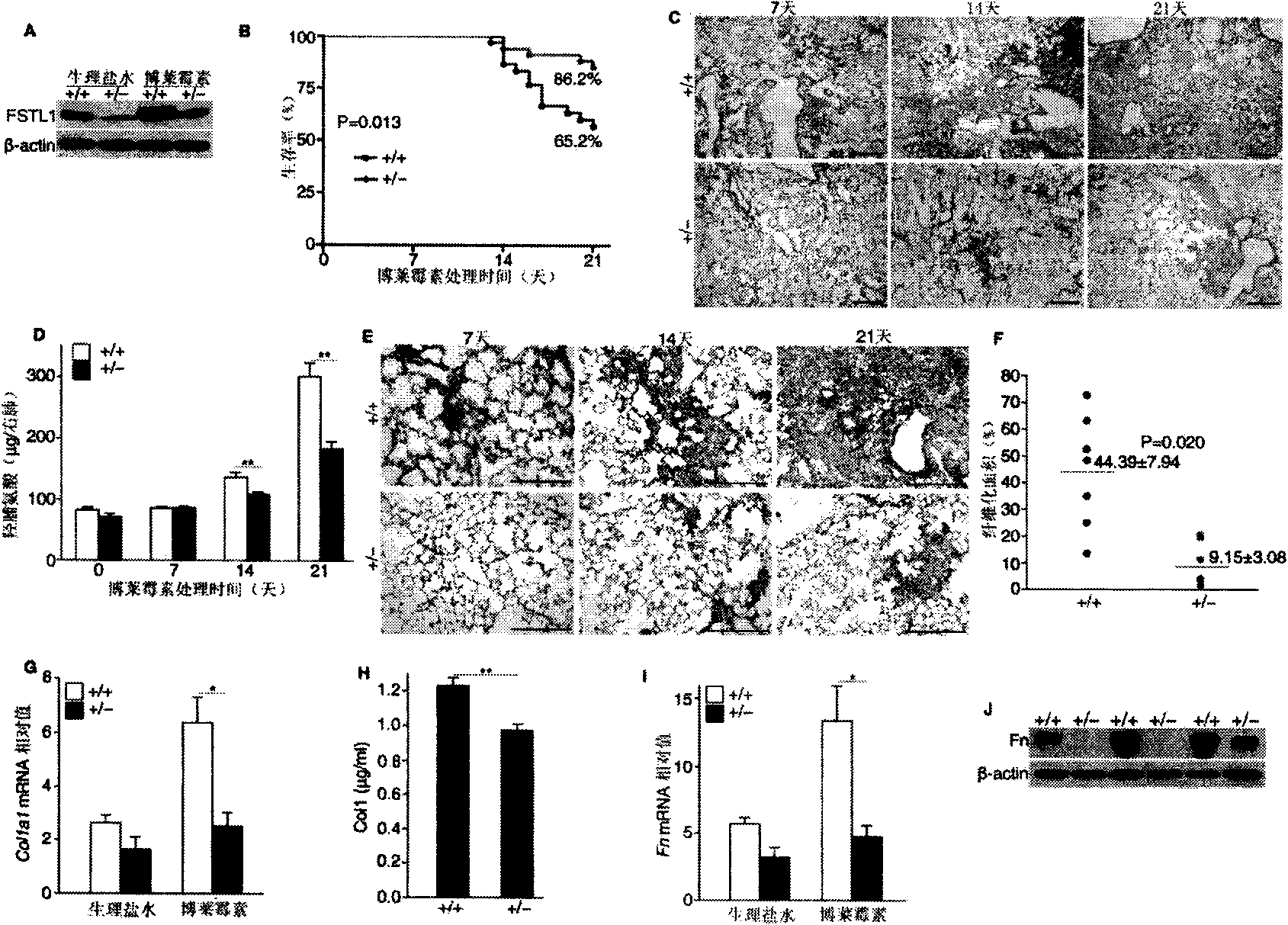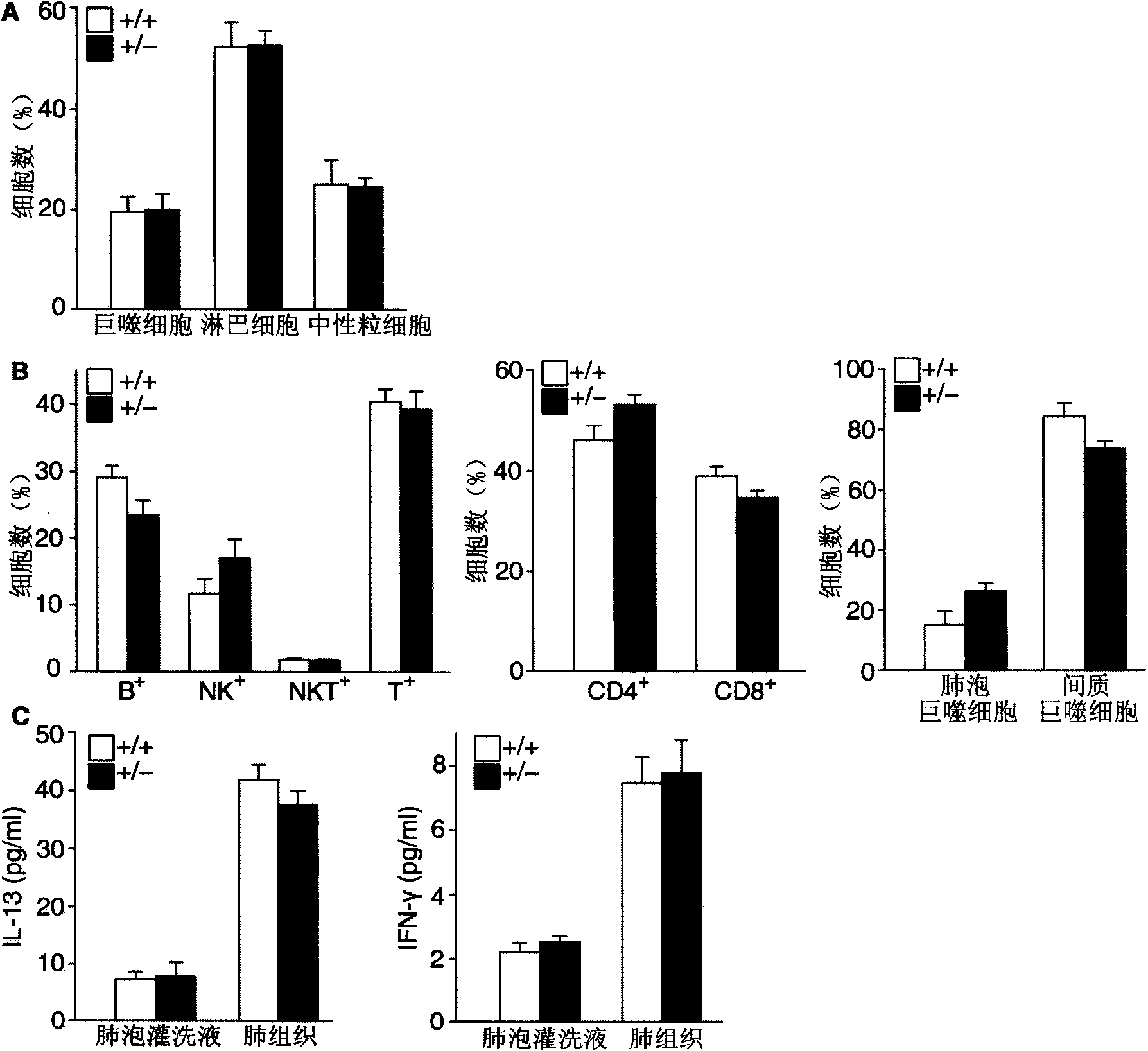Monoclonal antibody of follistatin-like protein l and application thereof
A monoclonal antibody, follistatin technology, applied in the fields of application, antibody, anti-animal/human immunoglobulin, etc., can solve the problem that no one has disclosed anti-FSTL1 antibody to inhibit pulmonary fibrosis, and achieve the effect of great application prospects
- Summary
- Abstract
- Description
- Claims
- Application Information
AI Technical Summary
Problems solved by technology
Method used
Image
Examples
Embodiment 1
[0055] Example 1.Fstl1 is highly expressed in the lung tissue of IPF patients and in the mouse pulmonary fibrosis model induced by bleomycin
[0056] In order to determine whether the expression of Fstl1 is abnormal in idiopathic pulmonary fibrosis, first, using the gene analysis data of IPF patient and normal human lung tissue published by Pardo et al. in 2005, the analysis found that compared with normal lung tissue, in IPF The expression of FSLT1mRNA in the patient's lung tissue increased by 2.4 times ( figure 1 Middle A).
[0057] Using real-time quantitative PCR analysis of human lung tissue from Beijing Chaoyang Hospital, it was further confirmed that the expression of FSTL1 mRNA in the lung tissue of IPF patients was significantly higher than that in normal lung tissue (1.7 times, Pfigure 1 B); while in IPF patient lung fibroblasts, FSTL1mRNA expression level is 2.3 times of normal lung fibroblasts ( figure 1 C).
[0058] In addition, the role of FSTL1 was further inv...
Embodiment 2
[0062] Example 2. Pulmonary fibrosis symptoms induced by bleomycin in haplo-knockout Fstl1 heterozygous mice were significantly alleviated
[0063] In order to further study the biological significance of the induced expression of Fstl1 in the process of pulmonary fibrosis, a model of pulmonary fibrosis induced by bleomycin in Fstl1 genetically engineered mice was established. Homozygous mice due to Fstl1 gene knockout (Fstl1 - / - mice) died of respiratory distress after birth, and Fstl1 gene knockout heterozygous mice (Fstl1 + / - mice) were used to study bleomycin-induced pulmonary fibrosis. First, compared with wild-type mice, Fstl1 + / - The expression of FSTL1 protein in mouse lung tissue was significantly reduced, and the increased FSTL1 protein induced by bleomycin was expressed in Fstl1 + / - It was also significantly reduced in mouse lung tissue ( figure 2 A).
[0064] Fstl1 + / - Mice have strong tolerance to bleomycin-induced lung injury. After 21 days of high-dose bl...
Embodiment 3
[0070] Example 3. Fstl1 deletion does not affect the pulmonary inflammatory response caused by bleomycin treatment
[0071] In the bleomycin injury model, persistent inflammatory response often promotes the progression of fibrosis, but the role of inflammation in pulmonary fibrosis is still controversial. Since Fstl1 regulates inflammatory responses in rheumatoid arthritis and cardiac allografts, Fstl1 + / - Inflammatory responses in mice versus wild-type mice following bleomycin treatment. Inflammatory cells detected in bronchoalveolar lavage (BAL) fluid after 7 days of bleomycin treatment revealed Fstl1 + / - The total number of inflammatory cells and the number of various types of inflammatory cells (including macrophages, neutrophils and lymphocytes) in the lung tissue of mice and wild-type mice were increased, but there was no difference (Table 2, image 3 A).
[0072] Likewise, FACS analysis indicated that Fstl1 + / - Lymphocyte subsets (such as CD4 + , CD8 + , NKT, NK a...
PUM
 Login to View More
Login to View More Abstract
Description
Claims
Application Information
 Login to View More
Login to View More - R&D
- Intellectual Property
- Life Sciences
- Materials
- Tech Scout
- Unparalleled Data Quality
- Higher Quality Content
- 60% Fewer Hallucinations
Browse by: Latest US Patents, China's latest patents, Technical Efficacy Thesaurus, Application Domain, Technology Topic, Popular Technical Reports.
© 2025 PatSnap. All rights reserved.Legal|Privacy policy|Modern Slavery Act Transparency Statement|Sitemap|About US| Contact US: help@patsnap.com



